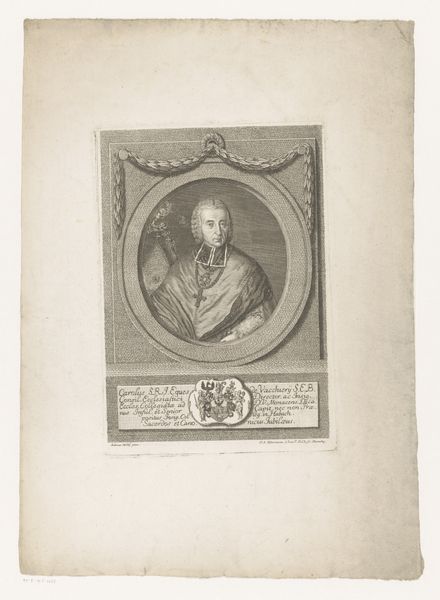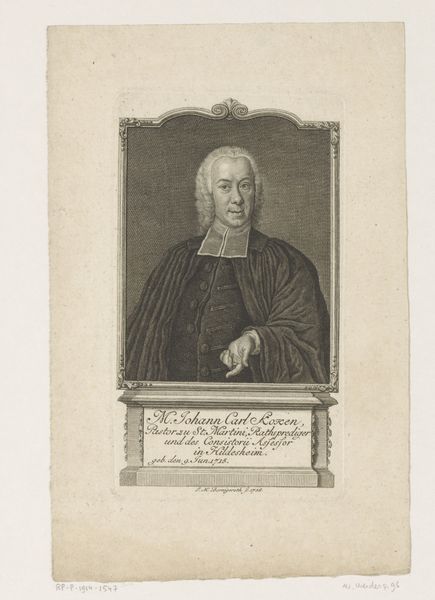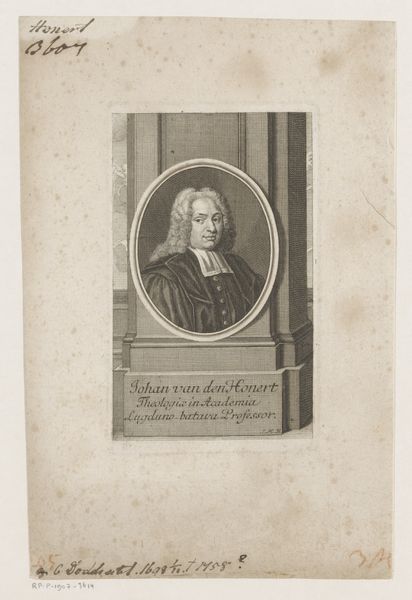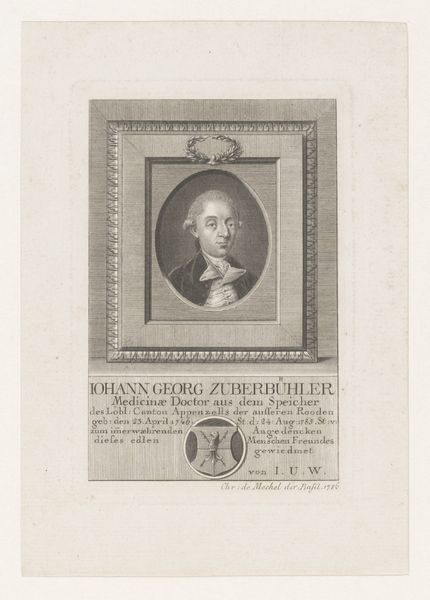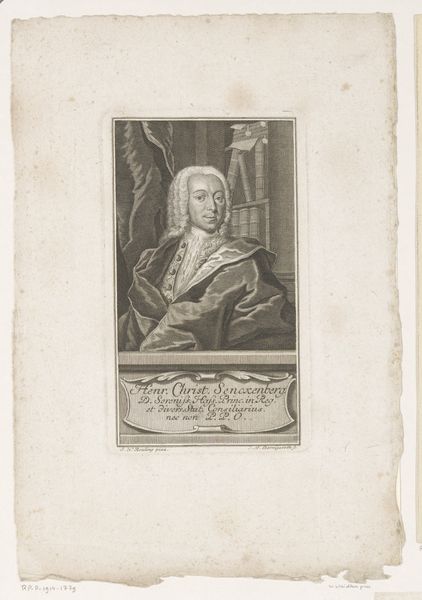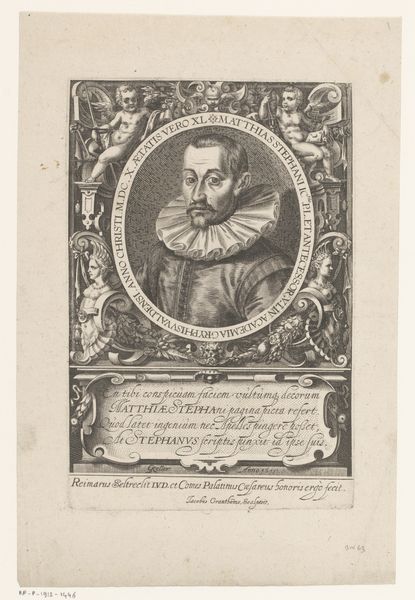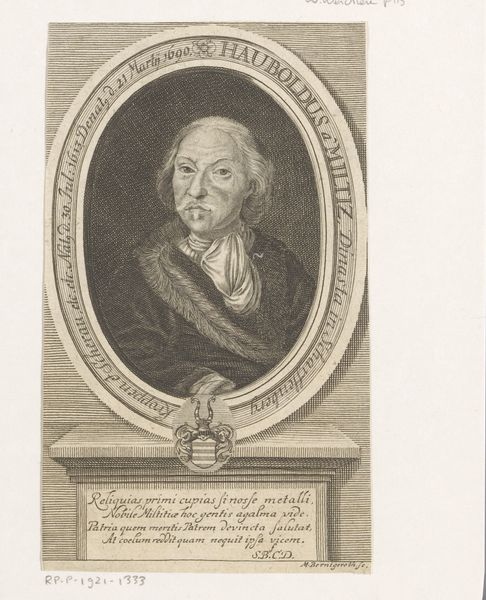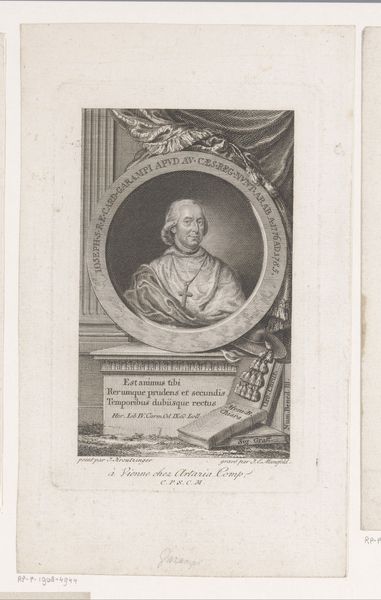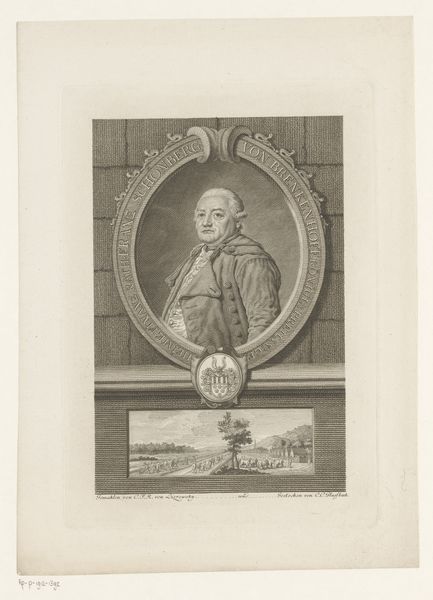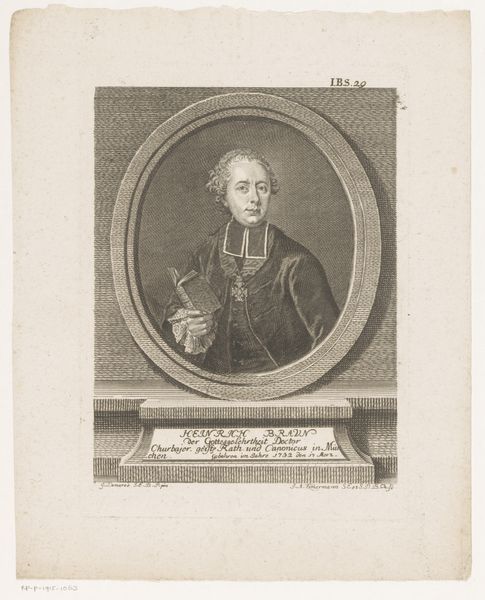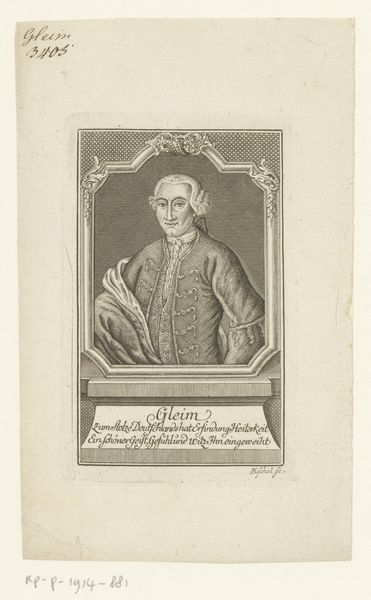
Dimensions: height 281 mm, width 163 mm
Copyright: Rijks Museum: Open Domain
Curator: This is a fascinating engraving dating back to 1765. Johann Martin Bernigeroth created this piece; it's titled "Portret van Balthasar Ludwig Tralles." The artwork presents a distinguished gentleman, likely a portrait commissioned to convey status and intellect. Editor: My immediate impression is how controlled and precise the engraving is, it seems very deliberate. The gentleman has this slightly raised eyebrow suggesting careful consideration of himself as an individual. Also, it makes me wonder about the paper used in this period. It has to stand the test of time to showcase an engraver’s precision, as is evident here. Curator: Absolutely, this print offers insights into the era's social structures and portraiture conventions, reflecting the power dynamics of the time and the male gaze associated with portraits and high society. The meticulous lines and detailing were also vital for propagating images across Europe. Editor: And what a fine rendering of Balthasar's clothing. His tailored suit is meticulously etched onto paper! The act of engraving – repeatedly pressing a sharp tool into a metal plate, inking it, and then transferring it to paper is laborious. Here, the labour invested elevates Tralles to a new stratum of power. How might this laborious work influence society's recognition of the individual displayed in this art object? Curator: Considering your perspective, I’m drawn to the contrast in materials used. The paper provides a medium on which identity, particularly social and economic identities, become legible, reproduced for broader consumption. There are elements here that also highlight how Enlightenment ideals shaped notions of masculinity. It really tells us about social status as much as aesthetic. Editor: The use of engraving allowed for multiplication and dissemination. Each impression carries a shadow of the labor of Bernigeroth and his team into different geographic territories, making its way into many individuals’ collections. Engraving normalizes this portrait by making the artwork familiar within communities invested in this elite’s likeness. The act of distribution normalizes that power structure. Curator: I see that familiarity you're talking about within our own time. This artwork highlights historical conditions but also speaks to continuous social struggles about power, labor, and representation in visual media. Even in 2024, the work makes visible the impact art continues to have within a diverse set of socio-political environments and challenges facing minoritized communities. Editor: Looking closely at this 18th century engraving helps us trace changes in technology and the power it carries. By looking at Bernigeroth’s engraving, and recognizing both his precision and laborious approach, we see how distribution via paper and ink played an important role in shaping identity and class throughout Europe.
Comments
No comments
Be the first to comment and join the conversation on the ultimate creative platform.
